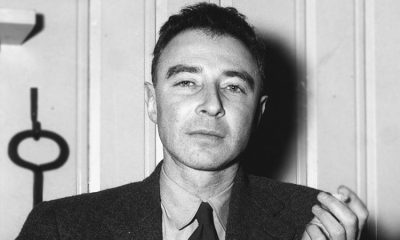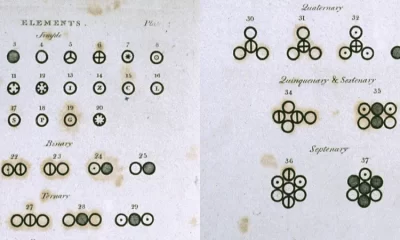Doctor
Willem Einthoven
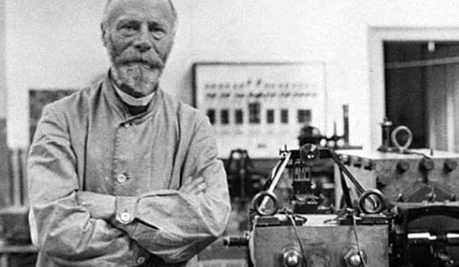
Willem Einthoven Biography
Willem Einthoven (May 21, 1860 – September 28, 1927) Physiologist and physician. Nobel Prize in Medicine in 1924. He was born in Semarang, Indonesia. He is well known for his contributions to the development of the electrocardiograph and its clinical application. His father died when they lived in Java, so Willem moved to the University of Utrecht to study medicine.
After finishing his studies he obtained the position of professor at the University of Leiden to deal with the positions of physiology and histology. He took the opportunity to advance an important work in the field of research. He quickly showed himself as a reputable scientist, participated in numerous international scientific forums and the best thing is that by managing several languages he could communicate his ideas faithfully without the need for translators.
For several years he experimented with the rope galvanometer and its utility for the registration of cardiac potentials, and the results obtained were published in an article in the year 1901. Five years later, he masterfully described the clinical applications of the electrocardiogram in Telecardiogramme (1906). After that, he published another article that laid the foundations for the development of this important tool in cardiology analysis. His investigative work was carried out simultaneously with his work as a professor.
Thanks to his work, the galvanometer was used to measure the differences in electrical potential during systolic and diastolic heart contractions and reproduce them graphically. This procedure is known as an electrocardiogram.
Later, he was interested in analyzing how healthy hearts worked and then defining a reference frame, through which attention was paid to the deviations caused by the disease. To sum up, he revolutionized the study, diagnosis, and treatment of cardiac pathologies. In his honor, the lunar crater Einthoven bears his name.

Doctor
Carl Gustav Jung
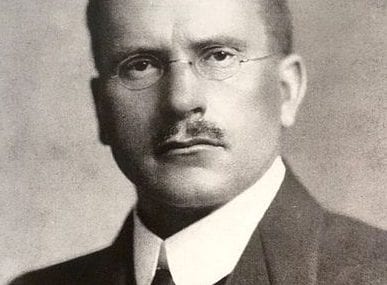
Biography of Carl Gustav Jung
Carl Gustav Jung (July 26, 1875 – June 6, 1961) was a Swiss psychologist, physician, and essayist born in Kesswil, Canton of Thurgau. He is recognized as the founder of the school of analytical psychology and a pioneer in the study of deep psychology. Jung focused on the theoretical theme of the functional connection between the structure of the psyche and its cultural manifestations, thus studying various subjects including anthropology, dream interpretation, mythology, religion, and philosophy.
Jung studied at the University of Zurich, where he later served as the medical director.
Proximity to Sigmund Freud
In 1902, Carl Gustav Jung worked with Pierre Janet at the Salpêtrière and at the Burghölzli clinic under the guidance of Eugen Bleuler. It was at the latter where he published his study Diagnostiche Assoziations-Studien (1906), which gave him popularity. The following year, he had the opportunity to meet Sigmund Freud and establish a strong personal and working relationship. In fact, he served as an editor for one of Freud’s works, Jahrbuch für psychoanalytische und psychopathologische Forschungen.
Divergences with Sigmund Freud
Carl Gustav Jung was the president of the International Psychoanalytic Association. By 1912, he had demonstrated some divergences with Freud and shortly after they decided to part ways. Jung began to develop his “analytical psychology” doctrine. Later, he published “Psychologische Typen,” in which he defined some fundamental orientations of human personality that exist in cultures and individualities.
Throughout his career, Jung carried out ethnopsychological explorations in areas such as North Africa, New Mexico, Kenya, and the East. In several of his works, he received collaboration from Richard Wilhelm, Heinrich Zimmer, and Károly Kerenyi. He went on to write several important works after his separation from Freud:
- Über die Energetik der Seele (1928)
- Seelenprobleme der Gegenwart (1929)
- Das Geheimnis der Goldenen Blüte (1929) he received collaboration from Richard Wilhelm.
- Psychologie und Alchemie (1944)
- Symbolik des Geistes (1948)
- Naturerklärung und Psyche (1952)
Academic distinctions
Due to his outstanding career, Jung received numerous academic distinctions, such as an “honorary degree” from the University of Oxford. He was elected president of the Internationale Allgemeine Gesellschaft für Psychotherapie, and later presided over the Schweizerische Gesellschaft für Praktische Psychologie. Several of his works have been translated into Spanish:
- “The Self and the Unconscious”
- “The Problem of the Unconscious in Modern Psychology”
- “Psychology of the Unconscious”
- “Psychological Types”
- “Psychology and Alchemy”
- “Psychology and Religion”
- “The Reality of the Psyche”,
- “Psychology and Education”
- “The Mystery of the Golden Flower”
- “Psychology and Mythology”.
The last position he held was that of professor at the Polytechnic of Zurich, but in 1942 he had to stop his work activities due to health problems. In his honor, the C. G. Jung Institute was created, which promotes the Jungian school of psychology, generating knowledge through the organization of national and international congresses and meetings.
Doctor
Sigmund Freud
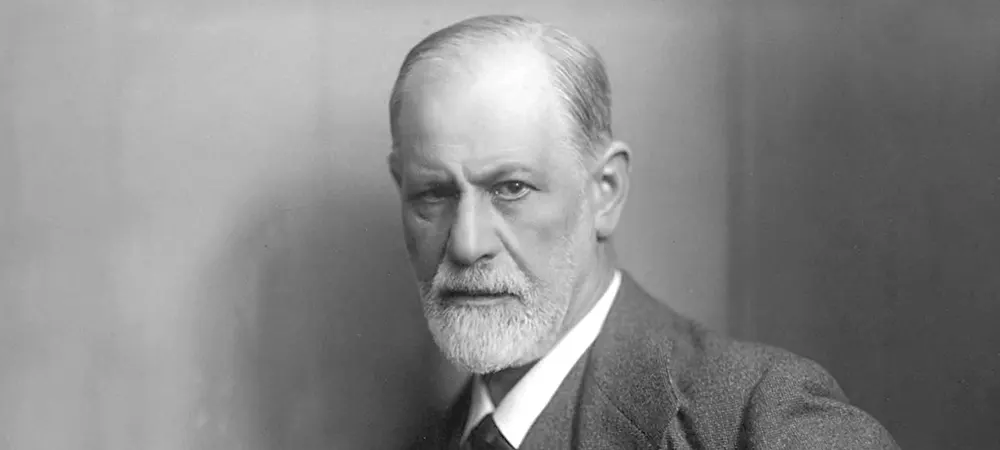
Biography of Sigmund Freud
Sigmund Freud ( May 6, 1856 and died September 23, 1939) was a neurologist of Czech origin. He was born in Příbor, where his father was a wool trader. Because his father was quite old at the time of his birth and had much older siblings, Sigmund developed great curiosity and asked many questions from a young age. He was very intelligent and skilled from his youth. The economic crisis in the country forced the family to move to Vienna, where they continued to face economic problems due to his father’s lack of employment.
Despite his dislike for Vienna due to these difficulties, Freud lived in this city until one year before his death. For a time, due to his Jewish status, he had to exile himself to London due to the Anschluss, the annexation of Austria to the pan-Germanic project of Greater Germany led by the Austrian chancellor Arthur Seyss-Inquart. Although figures such as Roosevelt and Mussolini intervened, these efforts were unsuccessful and his works were burned.
Despite the persecution, Freud’s family remained faithful to the Jewish community and their customs, although they were not particularly religious since his father leaned towards freethinking, and as a result, Freud had lost his religious beliefs since adolescence. Since graduating with excellent grades from school, an achievement achieved through the efforts of his parents, he showed a lot of interest and motivation for his future. Although he initially inclined towards law, he ultimately decided to study medicine, his intention was not to practice it but to study the human condition with scientific rigor.
After a period at university, he began to focus on biological research, from 1876 to 1882 he worked in the laboratory of physiologist Ernst von Brücke, where he studied some nerve structures of animals and the anatomy of the human brain. During this time he met Viennese doctor Josef Breuer, who was key to his economic and intellectual development. He also met Martha Bernays, daughter of a family of Jewish intellectuals, with whom he later got married.
Beginning of his career
At that time, to assume the responsibilities of being a husband, he began to work as a doctor, putting aside his investigative career without having a true conviction about this decision. However, he managed to acquire the clinical experience necessary to achieve a certain prestige. In that sense, he obtained important jobs in various departments of the Vienna General Hospital, deciding to specialize in neuropathology. In 1884, he conducted a study on the therapeutic use of cocaine, generating various criticisms because he experimented recklessly with people whom he seriously affected. For this reason, his reputation was somewhat tarnished.
In 1885, he began teaching neuropathology at the Medical Faculty of Vienna, and later on, psychoanalysis. His great intellect allowed him to obtain a scholarship to make a study trip for a year in the city of Paris. He spent several months in the neurology service of the Salpêtrière under the direction of Jean-Martin Charcot, then the most important French neurologist. There he learned about the manifestations of hysteria and the effects of hypnosis and suggestion in its treatment.
Beginning in Psychoanalysis
Freud was known for being an extremely jealous man, which caused him several problems and conflicts with his wife. Upon returning to Vienna, Freud opened a private practice as a neuropathologist, using electrotherapy and hypnosis as treatments for nervous diseases. His book written with Josef Breuer on the treatment of hysteria through hypnosis was a great success, entitled Studies on Hysteria (1895).
From that moment on, Freud began to outline his first ideas about psychoanalysis. Freud began speaking about the method of “free association” and at that time many medical friends had preferred to leave him alone. However, this did not prevent him from continuing with his research and emerging psychoanalytic concepts such as the unconscious, repression, and transference. In 1899, he published his famous work The Interpretation of Dreams, edited in 1900. Five years later, he published Three Contributions to the Theory of Sexuality.
Although his work was innovative and admired, it had few followers. However, in 1906 the situation changed; he managed to consolidate a circle of doctors who later became a psychoanalytic society. In 1908, they held the First Psychoanalytic Congress in Salzburg. From that moment on, his recognition was international, he was invited to the United States to give a series of lectures at Clark University in Worcester, Massachusetts, where his thinking had caused great admiration. In 1910, the International Psychoanalytic Society was founded in Nuremberg, led by Freud’s colleague, Jung, who led it until 1914.
Some works and his deterioration of health
In 1916, Freud published Introduction to Psychoanalysis. He continued to write important books such as The Future of an Illusion (1927), Civilization and Its Discontents (1930), and Moses and Monotheism (1939). During this period, he was diagnosed with jaw cancer and had to undergo several surgeries. From then on, his illness often hindered his intellectual production, but he managed to complete several texts. Finally, he lost the battle against his illness on September 23rd, 1939.
Contribution to psychology
The main contribution of Freud to psychology was his concept of the unconscious. Freud believed that a person’s behavior is deeply determined by repressed thoughts, desires, and memories, which can strongly influence their conduct. As a treatment method, psychoanalysis seeks to bring these memories to consciousness to free the individual from their negative influence. Without a doubt, his theories received important criticisms, but they still represent a great contribution to psychology. It is undoubtable that the spread of psychoanalysis revolutionized the view of human beings and its influence extended to fields like philosophy, literature, and the arts.
Notable works
- The Interpretation of Dreams
- Civilization and its Discontents
- Totem and Taboo
- Three Essays on the Theory of Sexuality
- The Ego and the Id
Doctor
Lucy Wills

Lucy Wills Biography
Lucy Wills (May 10, 1888 – 1964) hematologist and botany. She was born in Sutton Coldfield, United Kingdom. Her family enjoyed a good social and economic position. Therefore, she was able to study at Cheltenham Ladies ’College, an educational institute that offered high educational standards in teaching. Then, she studied Botany and Geology in 1911 but did not receive a Cambridge graduate degree until 1928, when Cambridge began granting degrees to women.
By that time, Wills had admirably managed to graduate as a doctor at the London Royal Free Hospital School of Medicine for Women. From the beginning, he knew that he would devote her knowledge to research and teaching in the Department of Pathological Chemistry of the same center in London. For the year 1928 Margaret Balfour contacted her. For several years she served as chief of pathology until her retirement in 1947.
After her retirement, she worked in South Africa and Fiji studying the effects of nutrition on health. During the last ten years of her life, she was a member of the local government for Chelsea. She started working on macrocytic anemia of pregnancy that primarily affects pregnant women in the tropics, with inadequate diets, this work was developed in several areas of India.
This woman is owed several contributions, such as discovering a nutritional factor in yeast that prevents and cures this disorder: the Wills factor or folate, the natural form of folic acid. In that sense, in the year 1930, she showed that anemia could be reversed with brewer’s yeast, which contains folate.
As part of a recognition of her work and the advancement of medicine, on May 10, 2019, the 131st anniversary of her birth, the Google search engine commemorated Wills with a Doodle available for North America, parts of South America and Europe, Israel, India, and New Zealand. Her knowledge changed the face of prenatal preventive care for women around the world.
WORKS
- Studies on blood and urinary chemistry during pregnancy: blood sugar curves.
- Studies in pernicious anemia of pregnancy (1930). This research has 4 parts.
- Treatment of “pernicious anemia” of pregnancy and “tropical anemia” with special reference to yeast extract as a healing agent.
- The nature of the hemopoietic factor in Marmite.
- A new factor in the production and cure of certain macrocytic anemias.
- Tropical macrocytic anemia: its relationship with pernicious anemia.
Doctor
Hippocrates
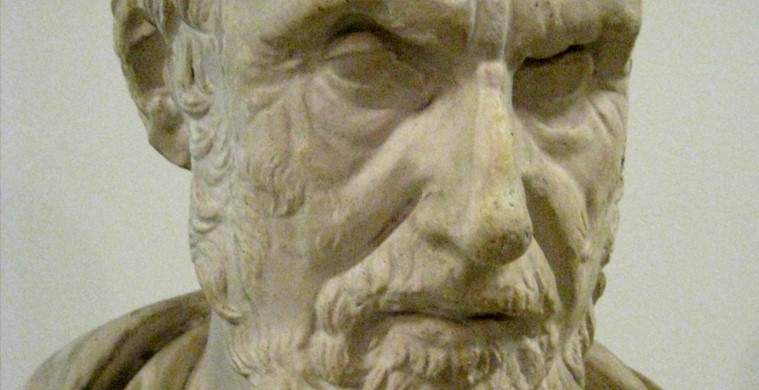
Hippocrates biography
Hippocrates of Kos (460 BC – 370 BC) doctor. He was born on the island of Kos, Ancient Greece. It is said that Hippocrates came from a family of magicians from the island of Kos and was directly related to the Greek god of medicine: Asclepius. He grew up in the times of Socrates and Plato, who cited him several times in his works. Hippocrates not only received medical training in Greece but made a trip to Egypt, where he directly knew the medical work attributed to Imhotep. This man was an Egyptian scholar considered a great doctor and in general a great sage.
Hippocrates began to capture all his knowledge and approaches from young. He is the author of a kind of medical encyclopedia of antiquity, said encyclopedia contained at least several dozen books (approximately 60 to 70). In his texts, the conception of illness is defended as the consequence of an imbalance between what he called the humor liquids of the body, that is, blood, phlegm and yellow bile or anger and black bile or melancholy. We must mention that this theory was further developed by Galen and that he would dominate medicine until the Enlightenment.
Hippocrates proposed to attack these conditions the use of medicinal plants and recommended clean air and a healthy and balanced diet. This was a really innovative approach for the time that is why he considered himself the father of medicine. However, among his contributions the consideration of the body as a whole stands out, Hippocrates emphasized in the making of detailed observations of the symptoms and taking into consideration the clinical history of the patients. In the field of medical ethics we can say that the approaches of Hippocrates gathered in the famous oath that bears his name, were the basis of modern ethics.
For Hippocrates, it was necessary to seek care and cure of the sick, in addition, to avoid abusing the trust of patients, especially women and also maintain confidentiality. In his writing, better known as the Hippocratic collection, he exposes diverse tendencies, which in certain cases can even oppose each other. These writings were written around 350 b.C., are an important source to get an idea of medical practices and conceptions prior to the Alexandrian era.
In Old Medicine, it was proposed to investigate the origin of the art that he practiced, an origin that he found in the desire to offer to the human being a regime of life and, especially, to generate a healthy diet that aims to satisfy in a rational way the most immediate of the human. For this reason, Hippocrates affirmed and spread the need to correctly cook food as a first manifestation of the search for a better existence.
Hippocrates really did not boast of saying that all his approaches were new, but he accepted that they came as a tradition from the middle of the fifth century and that they had to develop. The medical discoveries of the writers of the Hippocratic Corpus are often intermingled; the practitioners of Hippocratic medicine and the actions of Hippocrates himself, this tends to generate a lack of knowledge of Hippocrates himself and his contributions to the medical field.
Despite this situation, in particular, he is credited with great progress in the systematic study of clinical medicine, he managed to gather the medical knowledge of previous schools and combine medical practices of great historical importance, such as the Hippocratic oath and other works. This ability was learned from the great Egyptian doctor. We can also say that the teachings of his father, Heraclides, also a doctor, were fundamental. His mother, Praxitela, was also very important in his intellectual development. Polybius was the true successor of Hippocrates. Hippocrates was also a man interested in theurgy and philosophy.
The first was a magical-religious practice that sought the invocation of the over-earthly powers, communication with angels and gods to receive spiritual help. Hippocrates was mentioned in the dialogue of Plato Protagoras, in which the philosopher described him as «Hippocrates of Cos, that of the Asclepiates». He was mentioned very rarely, or at least the texts that mentioned him do not survive.
This Greek doctor made other shorter trips to Thessaly, Thrace and the Sea of Marmara, where he obtained several medical knowledge. Throughout history, he has been recognized for his important and lasting contributions to this science as the founder of the school that bears his name. We must say that this intellectual school revolutionized the medicine of its time, and managed to establish it as a discipline separate from other fields with which it had traditionally been associated, in that sense, it became an authentic profession.
The life of Hippocrates probably ended in Larisa at the age of 90 years in 370 b.C, although according to some sources he exceeded 100 years.
Doctor
Deepak Chopra

Deepak Chopra biography
Deepak Chopra (October 22, 1946) Ayurvedic medicine doctor, motivational speaker, writer, internist and lecturer specializing in the area of quantum mysticism. He was born in New Dheli, India. Currently lives in La Jolla, California, United States. Chopra was a student from a family that managed to assure him an acceptable education, knowing that in his city and in general in India the situation of poverty, inequality, and illiteracy is great.
So, after graduating with good grades, he began studying medicine at the public university in his city. When finishing his study he decided to look for better horizons outside his country. So, he traveled to the United States, at first it was not easy to get a job, although he spoke English, the culture shock was hard. But after a few months, he got a job and was promoted in a short time. He became director of the New England Memorial Hospital and was also a professor at Boston University. Stress and long working hours led him little by little to go to the cigarette and drink.
Chopra had to live a great battle against these addictions that were affecting his personal, emotional, physical and work life. Therefore, he began to return to the foundations of natural medicine learned in his homeland. Improvements began to emerge in his life. So he felt the need to divulge the principles of spiritual health, in which the mind plays a fundamental role. However, Chopra’s ideas have been controversial. He has been accused of a charlatan for not having proof of the effectiveness of his methods.
He has also been accused by some people who have taken workshops at his Chopra Center in La Jolla, California for fraud because they say they did not feel any change after this. But, undoubtedly, this center is very popular and constantly hosts an impressive number of patients from various parts of the world. Sometime later, new comments were raised against him, he was accused of plagiarism in several books, selling prescription drugs and even being seen in brothels. Actually, it was mostly a smear campaign.
But the accusations did not matter to Chopra and his readers. His followers have defended him staunchly because they feel in him a guide, protection and a wise word at the right time. His books have also managed to be sold in various parts of the world and each and everyone is qualified as successful. The best sellers lately have been: Bodies without age, minds without time, Quantum healing, The seven spiritual laws of success, Twin Souls and Sincrodestino, one of the best sellers in Colombia.
In his new book, he explains that coincidences have a great power to change the course of life. Chopra ensures that the destination can be determined to achieve what is desired. In other words, coincidences are messages that come to us to route us better in life. In his book, he gives readers several tips on how to take advantage of coincidences in each one’s life. For this Indian doctor, destiny is the progressive realization of one’s goals. Chopra speaks to his followers of the need to connect with the creativity of the Universe, his ability to have compassion, achieve the purposes and love in life.
Now, for Chopra and his approaches meditation is the key and the way to find the answer to many things. Listening to your inner voice and acting according to it is one of the great tasks. At the moment in which a person’s mind achieved this, it is escaping from various emotional problems such as depression, despair, lack of meaning, among others. One of the methods by which Chopra is recognized is by his use of confrontation, in his texts and talks he is always asking questions, which undoubtedly place the person in a complicated position.
One of his most outstanding books is Golf, in this book he clarifies how important it is to understand the spirit of this game since to execute it and obtain the desired objective you must use the coordination of the body and mind. Chopra accepted an interview by the Colombian newspaper El Tiempo, where he gave a vision based on his experience and knowledge of the Colombian situation. He said it was necessary that every citizen find happiness to improve so many problems. Finding that way will guarantee success.
Chopra is one of the Indians with the most published books, he has almost 40 and they are all successful, a great number have been Best Sellers. He is one of the most outstanding characters in topics of spirituality and the power of the mind in medical healing. His influence is marked by the teachings of traditional Indian scriptures such as Ayurveda, the traditional current of Hindu healing, the Vedān ta and the Bhagavad Gita. This is expressed in each of his interviews, we also know that he is a follower of Jiddu Krishnamurti.
Among Chopra’s detractors are famous scientists and doctors such as biologist Jerry Coyne, theoretical physicist, and cosmologist Lawrence Krauss, evolutionary biologist Richard Dawkins, David Gorski, Dr. Stephen Barrett, Michael Shermer, neurologist Steven Novella, PZ Myers, the medical consultant Gerald C. Zumwalt, among others.
Time magazine chose him among the 100 icons and heroes of the 20th century and was baptized as the prophet-poet of alternative medicine. Many of his books are translated into 35 languages; in English, more than 12 million copies have been sold.
